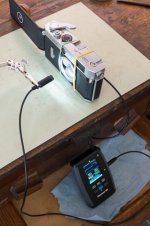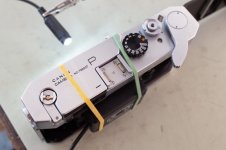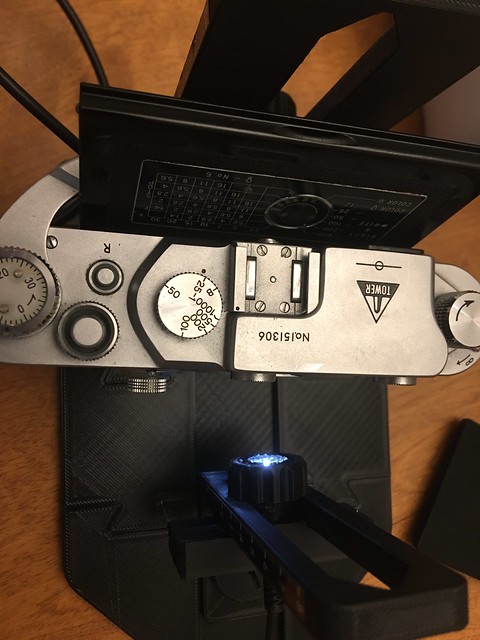Thanks, good info. I ended up testing a F2, SRT-201, F3 and a Bessamatic CS. As expected some variability between them all.
The SRT-201 did well and was very close for all speeds except at 1/1000 where it was slow. Only a little faster than 1/500th.
The F3 did well (electronic shutter) but I saw a lot of variability at 1/1000 (several stops) so I want to look into that more. The rest of the speeds were consistent.
The F2 was pretty good overall but fast at 1/1000 and I think I forgot to record the 1/2000 shutter speed.
The Bessamatic CS was slow at 1/500 and 1/250 and the rest of the speeds probably were too. Interestingly however the rest of the speeds matched up pretty close to the old shutter speed scale, but the camera is marked with the new speeds.
Pictures here
Shawn
I looked at a few of the read outs for the 201—it is in a similar situation to the Tower. The first curtain is a little lazy. If you look at all the readings down to 1/125—they are all tapering across the gate.
The 1/125 is a good case study. The reduction in exposure is so negligible, who cares? And, absolutely, in itself it is of no consequence in use.
What it does however illustrate is the decreasing tolerance for variations in curtain running speeds as the exposure times shorten. 1/125, 1/250, 1/500 and 1/1000 all manifest tapering exposure. And yet, an alteration in the speed of the first curtain which will have an effect on consistency of the 1/125 exposure across the gate that's undetectable, on film—will be problematic on Eg 1/1000. It well serves to demonstrate how little scope for maladjustment there is with that tiny 1/1000 slit and (to a lesser extent) 1/500.
The slit on the start side of the gate is clearly wide. For ease of reference your test gave 1/577 start; 1/778 end. So—balancing the curtains again will get that exposure even, but probably at an even 1/600–1/700. The slit might tighten itself marginally with the first curtain running at the correct speed (the first curtain powers the timing gears and trips the second curtain release, remember?). If it's a bit lazy this might lengthen the slit slightly by itself. But it's not slowed that much, really—yes it's out of spec, but not ruinously so.
Hence, curtain balance won't get you a good 1/1000 by itself. The slit needs to be tightened.
There is an easy to reach adjustment for the 1/1000 release beneath the speed dial after removing the ASA setting parts from the dial centre. But it's probably not needed. If the mechanism is cleaned and lubricated, not only will the first curtain probably get back to its correct travel time, but the release will likely trip more quickly, and tighten the slit up. If that's not the case only slight adjustments to the curtain tension and/or release timing would be called for.
I hope the above all makes sense.
The take away is that balanced curtains make the exposure consistent. But the timing system controls the interval before the second curtain moves, and this interval (which determines the slit width), at the 1/60 to 1/1000 times, particularly, is what determines how much exposure will occur.
It might be interesting to re-test the Bessamatic with a 50mm lens attached. My Kyoritsu, for instance, is meant to be used to test leaf shutters with a lens mounted. Many leaf shutter cameras are impossible to test with a lens removed (short of dismantling them, anyway). By all means, follow Eric's instructions. But in the absence of advice to the contrary—if the faster times are improved with a (wide open) lens attached—I would probably accept these as being a more accurate test result. In my experience, a serviced Contaflex (which uses a substantially identical Synchro-Compur shutter) will return surprisingly accurate top speeds (with a lens of course). I'm quite partial to Bessamatics, myself, so I should run one or two over my own tester. Don't overlook the operation of the capping plate, either. If it's not lifting completely, this will cause its own problems.
Apropos the Facebook resource —the group for Phocron XA users is here, Eric monitors it and provides support:
https://www.facebook.com/groups/413149092376839/
Also the Learn Camera Repair group has a lot of relevant SRT related service information:
https://www.facebook.com/groups/360490091319202/
































